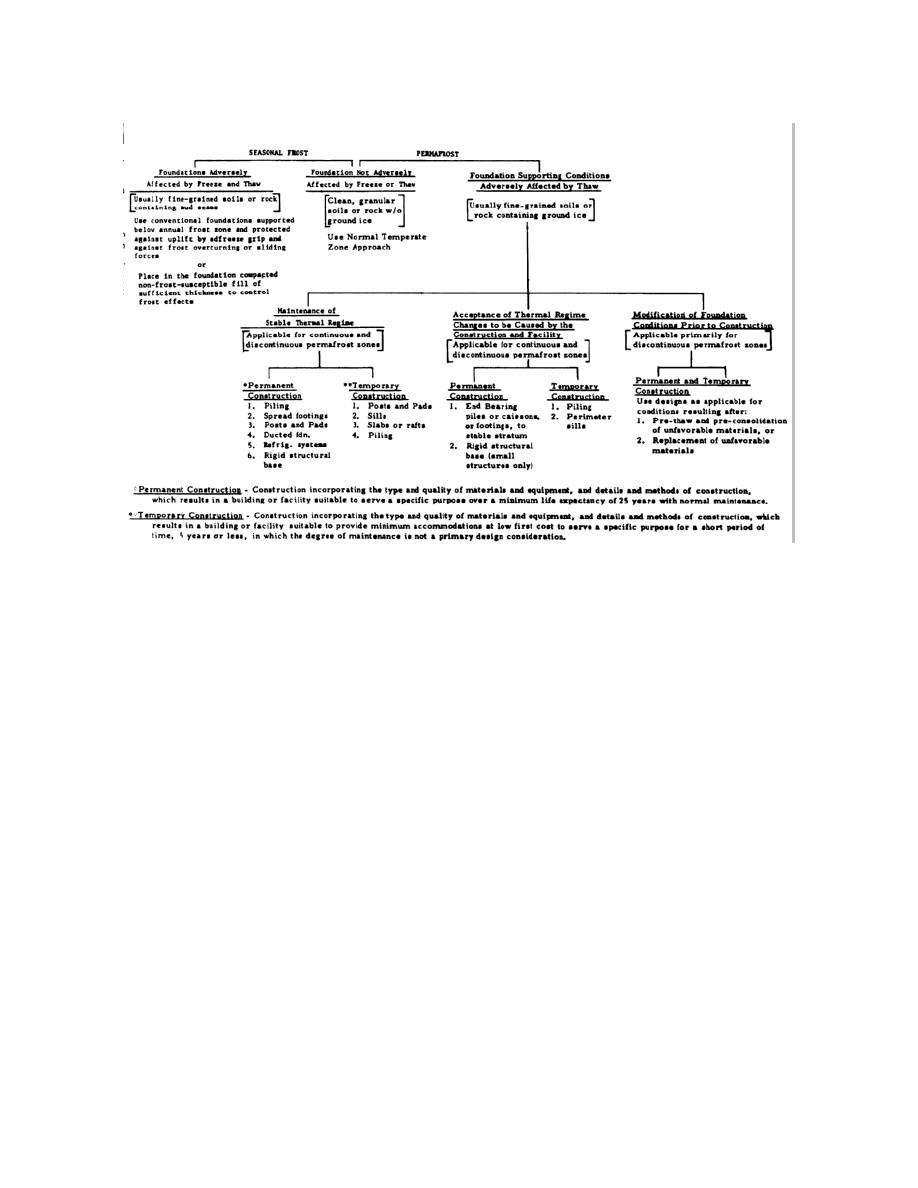
UFC 3-220-01N
15 AUGUST 2005
Figure 11-4 Design Alternatives
The frost penetration can be computed using the design freezing index
and the detailed guidance given in UFC 3-130-01. For paved areas kept free of snow,
approximate depths of frost penetration may be estimated from UFC 3-130-01, by
entering the appropriate chart with the air freezing index. A chart is also presented in
UFC 3-130-01, from which approximate depths of frost penetration may be obtained for
a variety of surface conditions, using the air freezing index in combination with the
appropriate surface index/air correction factor (n-factor).
In the more developed parts of the cold regions, the building codes of
most cities specify minimum footing depths, based on many years of local experience;
these depths are invariably less than the maximum observed frost penetrations. The
code values should not he assumed to represent actual frost penetration depths. Such
local code values have been selected to give generally suitable results for the types of
construction, soil moisture, density, and surface cover conditions, severity of freezing
conditions, and building heating conditions that are common in the area. Unfortunately,
the code values may be inadequate or inapplicable under conditions that differ from
those assumed in formulating the code, especially for unheated facilities, insulated
foundations, or especially cold winters. Building codes in the Middle and North Atlantic
States and Canada frequently specify minimum footing depths that range from 1 to 1.5
m (3 to 5 ft). If frost penetrations of this order of magnitude occur with fine silt and
clay-type soils, 30 to 100 percent greater frost penetration may occur in well-drained
gravels under the same conditions. With good soil data and knowledge of local
conditions, computed values for ordinary frost penetration, unaffected by building heat,
may be expected to be adequately reliable, even though the freezing index may have to
11-12


 Previous Page
Previous Page
